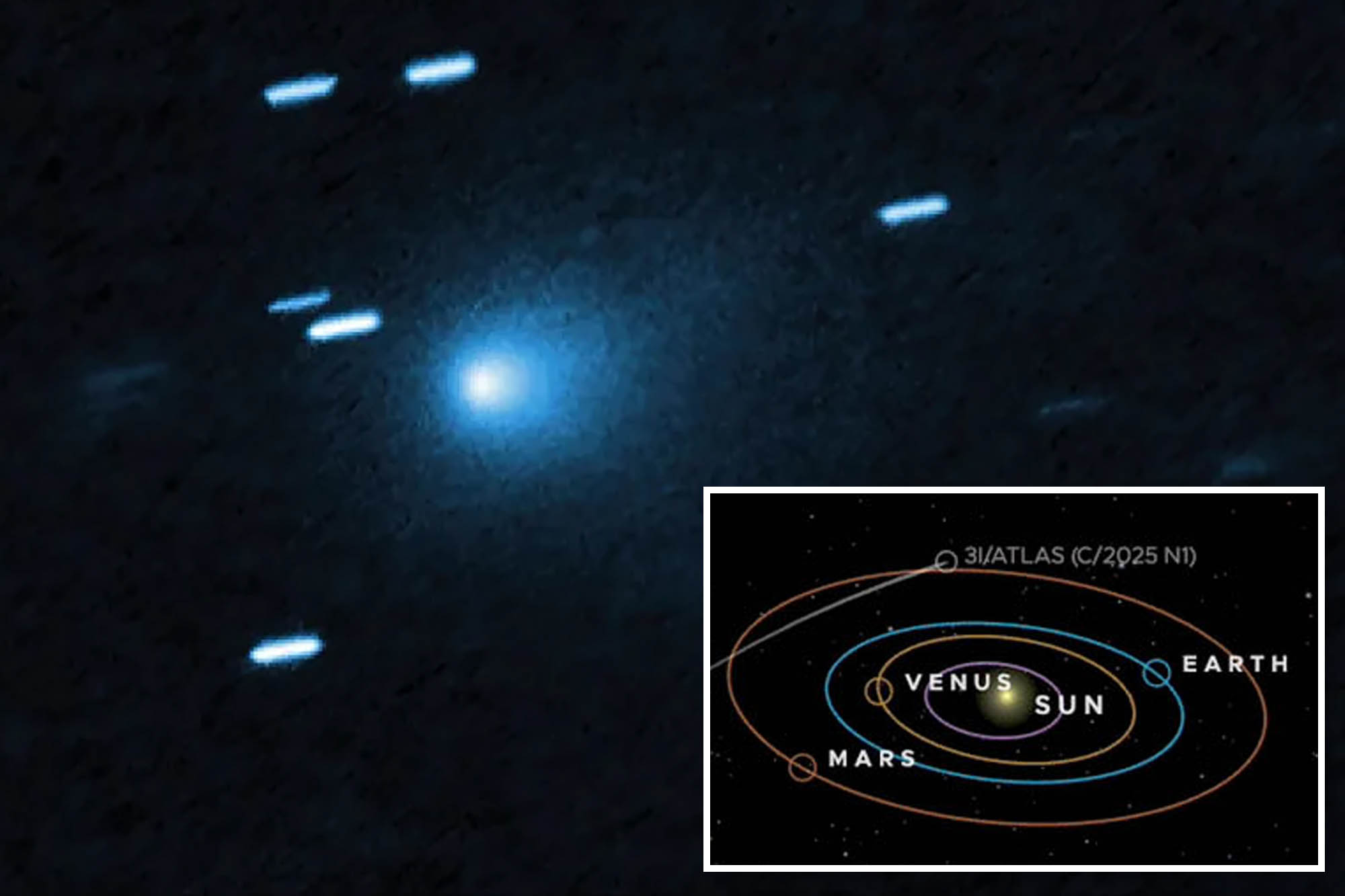The interstellar object known as 3I/ATLAS has demonstrated unusual characteristics that have prompted speculation about its nature. Notably, it has exhibited non-gravitational acceleration and has appeared “bluer than the Sun” as it approached our local star. These observations were documented by NASA, leading to discussions regarding the possibility of an alien spacecraft, according to Harvard astrophysicist Avi Loeb.
The acceleration measured this week is linked to a significant outgassing event, typically associated with comets. This outgassing could result in the object losing around half its mass and producing a large debris plume in the coming months. In a recent paper, Loeb suggested that this behavior, combined with the object’s striking blue hue, may indicate the presence of an artificial engine. He stated, “This might also explain the report on 3I/ATLAS getting ‘bluer than the Sun.’”
Loeb further noted that the blue appearance could stem from a hot engine or an artificial light source, although he acknowledged it might also reflect a natural cometary signature. During its closest approach, 3I/ATLAS came within approximately 172 million miles of the Sun, while Earth was positioned on the opposite side, hindering direct observations.
Several spacecraft orbiting the Sun, however, managed to capture data revealing a “rapid brightening” of 3I/ATLAS, which was noted to be “distinctly bluer than the Sun.” This change in color is particularly remarkable compared to earlier observations when the object appeared red, then green, according to findings from the US Naval Research Lab.
3I/ATLAS is expected to make its closest pass to Earth on December 19, 2023, at a distance of about 167 million miles. This event will provide researchers on Earth their best opportunity to ascertain whether the object is indeed a comet or potentially an artificial construct. Loeb emphasized that if no substantial gas cloud is observed around 3I/ATLAS during this pass, it could suggest the presence of a propulsion system.
Loeb also criticized NASA for not releasing images captured by the Mars Reconnaissance Orbiter’s HiRISE camera during its close encounter with the Red Planet in early October. Sources indicate that these anticipated images will not be available until the government reopens.
In response to the growing speculation about 3I/ATLAS, NASA Acting Administrator Sean Duffy sought to quell fears regarding the object’s implications. He asserted that 3I/ATLAS is the third interstellar comet to traverse our solar system, stating, “No aliens. No threat to life here on Earth.” Duffy’s comments came via a social media post addressing concerns raised by others, including reality television personality Kim Kardashian.
As the scientific community prepares for the December encounter, the observations of 3I/ATLAS could yield significant insights into the nature of this interstellar object and its origins.







